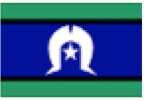At SSRV, our lawyers advocate for people at all stages of the review process, including internal reviews within Centrelink by an Authorised Review Officer. Here’s how SSRV supported two clients to achieve a successful outcome at the internal review stage.
An Authorised Review Officer (ARO) works independently and is not bound by the previous decision made by Centrelink. In their review, the ARO can consider new materials and evidence to either agree with Centrelink’s original decision or set it aside and make a new decision.
These two stories demonstrate the positive impact and tangible difference that our legal service provides to members of our community, and show that by assisting clients at the internal review stage, how we help them to achieve a positive outcome early and avoid protracted legal proceedings.
Helping People Access Centrelink Payments
Daniel immigrated to Australia and was living in Australia on a permanent visa, which qualified him for Centrelink payments. However, before accessing payments he had to firstly serve a four-year waiting period, known as the ‘Newly Arrived Resident’s Waiting Period.’
Daniel was married and had a child. After immigrating to Australia, he and his wife learnt that they were expecting triplets. They were excited but also very concerned about how they would financially support three newborns whilst already experiencing financial hardship.
After the triplets were born, the family fell into severe financial hardship. Daniel had been working in his home country and was completing the necessary requirements to have his education recognised in Australia. The casual work he was able to find was very sporadic, and he did not have regular income. The family was receiving Family Tax Benefit, and his wife was receiving Parenting Payment, but this was not enough income to support their household. They could not afford a private rental and were homeless for a period. When they contacted SSRV, the family were living in temporary community housing.
Daniel had applied for both JobSeeker and Special Benefit payments, but both of his applications were rejected, on the basis that he had not completed the required four-year waiting period. He tried to explain his circumstances to Centrelink and was told to reapply in 2027.
The SSRV lawyer explained to Daniel that he had the right to seek an internal review of Centrelink’s original decision to reject his application for Special Benefit. The SSRV lawyer explained that in some circumstances, Centrelink can exempt an individual from serving the Newly Arrived Resident’s Waiting Period. For example, if Daniel could demonstrate that he had experienced a substantial change in circumstance beyond his control after arriving in Australia, he would be exempt from the waiting period. The SSRV lawyer explained that to be successful, Daniel would need to demonstrate that:
· The change in circumstances is substantial and beyond his control and occurred after arrival in Australia and,
· He is in financial hardship and are able to satisfy the available funds test and,
· He have attempted to obtain a sufficient livelihood, and
· His available funds or support options were depleted because of the change in circumstances.
The SSRV lawyer supported Daniel to write a statement that explained his substantial change in circumstances. The SSRV lawyer drafted submissions to accompany his statement, and helped Daniel to lodge an application for an internal review by Authorised Review Officer of Centrelink’s decision to reject his application for Special Benefit.
The review was successful. Daniel began to receive Special Benefit payment and he was back paid from the date that he originally applied. Accessing Special Benefit payment helps him to financially support his young family, attend to his studies and save money to try to access permanent and stable housing.
Helping People to Seek a Review of a Centrelink Debt
Sarah is a victim/survivor of family violence. Her ex-partner had perpetrated violence towards her throughout their relationship, including coercive and financial control.
After applying for a Centrelink advance payment, Sarah’s ex-partner withheld it from her and paid her a small ‘allowance’. He refused to give her any more money when she asked, and eventually stopped paying her any amount.
Sarah’s Centrelink payments were eventually cut off and Centrelink raised a debt against her to recover the unpaid advances owing to them. Sarah contacted SSRV for advice.
The SSRV lawyer explained to Sarah that she had the right to seek a review of Centrelink’s original decision to raise a debt against her. The SSRV lawyer supported Sarah to write a written statement that detailed the family violence that had occurred. The SSRV lawyer then wrote legal submissions and assisted Sarah to apply for an internal review of the debt by an Authorised Review Officer.
After reviewing Sarah’s statement and SSRV’s legal submissions, the ARO was satisfied that ‘Special Circumstances’ existed to justify the whole debt being waived. This means that Centrelink will stop recovering the debt from Sarah, and she is not required to repay the outstanding amount. Additionally, the ARO decided to refund to Sarah all earlier repayments that she had paid towards the debt.
After leaving the relationship, Sarah lived in a family violence refuge for a period and continues to build a life free from violence. Having the debt waived and the repayments refunded to her will assist her to recover from the financial abuse perpetrated towards her and avoid her vulnerabilities and financial hardship from becoming further entrenched.
*Names have been changed for the safety and privacy of people mentioned in this story.




